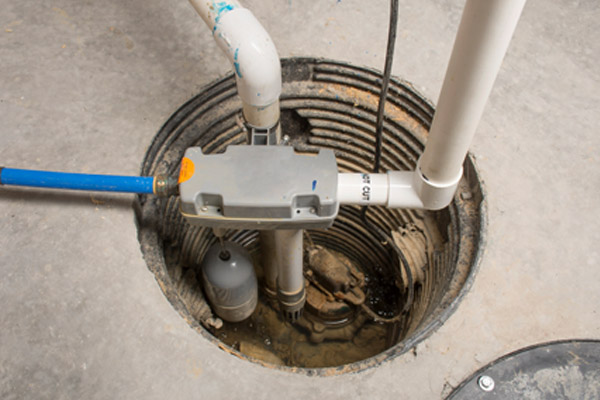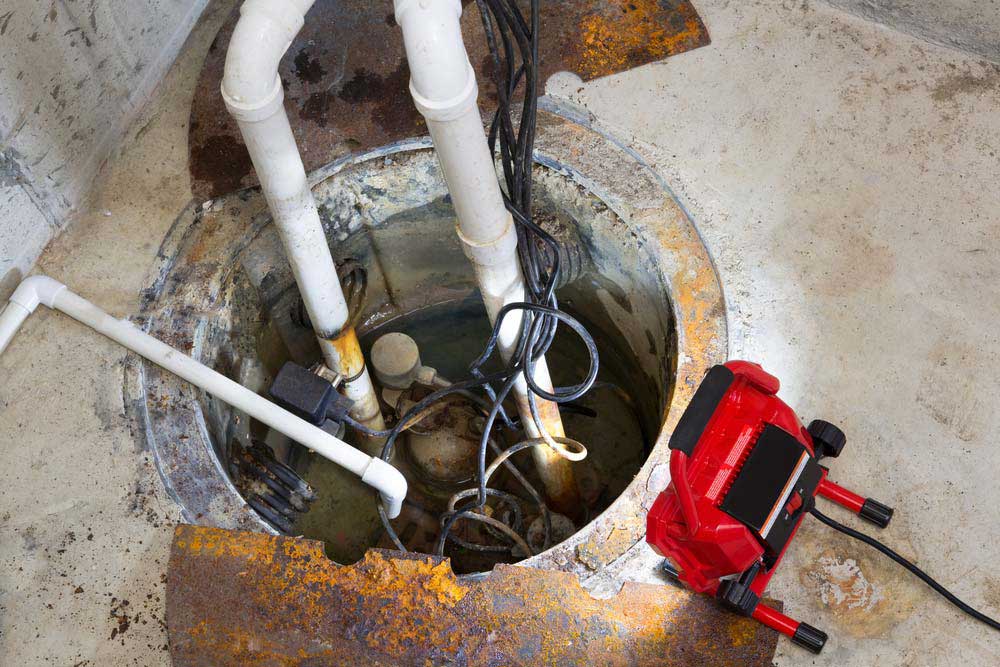Any individual has their personal way of thinking with regards to Steps to Cleaning Your Sump Pump Properly.

Sump pumps are vital parts in many homes, specifically in locations susceptible to flooding or excessive moisture. They aid avoid water damage by successfully eliminating excess water from basements or crawl spaces. Nonetheless, like any other home appliance, sump pumps call for routine maintenance to guarantee they operate efficiently when needed one of the most. Cleansing your sump pump is a crucial part of its maintenance, and understanding just how to do it appropriately can conserve you from expensive repairs and potential catastrophes.
Introduction
Maintaining a tidy sump pump is crucial for its proper functioning and longevity. Neglecting this vital task can bring about obstructions, malfunctions, and ultimately, water damages to your property. Consequently, finding out just how to clean up a sump pump is vital for property owners who rely on these gadgets to maintain their basements dry and protected.
Indications of a Dirty Sump Pump
Understanding when your sump pump needs cleaning is vital for stopping prospective malfunctions. Some common indicators that show a filthy sump pump include strange sounds throughout procedure, minimized water circulation, and visible debris in the pit. If you notice any of these symptoms, it's essential to cleanse your sump pump quickly to avoid any type of additional problems.
Getting ready for Cleansing
Before you begin cleaning your sump pump, it's important to take some safety and security preventative measures. Beginning by shutting off the power to the pump to avoid any type of electrical mishaps. Additionally, put on suitable protective equipment, such as handwear covers and safety glasses, to shield yourself from dirt, particles, and potential virus.
Recognizing the Sump Pump
Prior to diving right into the cleansing procedure, it's essential to have a standard understanding of how a sump pump works. Usually set up in a pit or basin below the cellar flooring, a sump pump consists of numerous essential elements, consisting of a pump, a float switch, and a discharge pipeline. When water accumulates in the pit, the float button activates the pump, which after that pumps the water out with the discharge pipe, far from the building's structure.
Step-by-step Guide to Cleaning Up a Sump Pump
Shutting Off the Power
Begin by detaching the power supply to the sump pump to avoid any accidents while cleansing.
Looking For Proper Functioning
Before re-installing the pump, carry out a fast test to ensure that the float switch triggers the pump properly. Pour some water into the sump pit and observe the pump's procedure. If everything is working properly, you can reconstruct the pump and reconnect the power supply.
Getting Rid Of Particles and Dirt
Make use of a pail or a scoop to get rid of any type of noticeable debris, dirt, or sediment from the sump pit. Dispose of the particles correctly to avoid it from clogging the pump or the discharge pipeline.
Cleaning the Pump and Float Switch
Once the pit is clear of particles, thoroughly remove the pump from the pit. Inspect the pump and the float button for any type of indicators of damages or wear. Use a soft brush or towel to clean up the surface areas and remove any gathered grime.
Flushing the System
After cleaning the pump and float switch, flush the sump pit with clean water to eliminate any remaining dirt or debris. This will certainly aid guarantee that the pump runs smoothly and effectively.
Maintenance Tips to Maintain Your Sump Pump Clean
In addition to regular cleaning, there are several upkeep ideas you can comply with to keep your sump pump in ideal problem:
Conclusion
Cleaning your sump pump is a critical element of its upkeep and ensures that it operates properly when you require it one of the most. By adhering to the steps laid out in this guide and integrating routine upkeep right into your regimen, you can expand the life expectancy of your sump pump and shield your home from water damage.
6 STEPS ON HOW TO CLEAN A SUMP PUMP PROPERLY
UNDERSTANDING SUMP PUMPS
Your sump pump plays a crucial role in protecting your home by managing and removing excess water. It primarily functions as a “shield”, guarding your basement against the damaging effects of water accumulation. The pump is housed in a sump pit in the lowest part of your basement, and its job is to pump out any water that collects there.
During heavy rainfalls or when snow melts rapidly, water can infiltrate your basement, posing potential risks like flooding, structural damage, and harmful mold growth. Here, the sump pump springs into action, pumping out the intruding water and directing it away from your home.
SAFETY FIRST
Before cleaning, remember to prioritize safety. Disconnect the sump pump from the power source to prevent any accidental electric shocks. Also, wear sturdy gloves to protect your hands from any sharp or dirty components within the pump.
REMOVE THE SUMP PUMP
After ensuring your safety, the next step is to remove the sump pump from its pit. Doing this might require careful maneuvering as you don’t want to damage any pump components. Once removed, clean the sump pit to remove any accumulated debris or sludge.
INSPECT THE PUMP
Inspect the pump for any visible signs of wear or damage. Check the power cord, float switch, and impeller housing. If any components look worn out or damaged, consider replacing them to ensure optimal performance.
CLEAN THE PUMP
Thoroughly clean the pump with warm, soapy water. Make sure to rid it of any dirt, gravel, or other debris that might impede its performance. You can use a toothbrush to clean the small, hard-to-reach parts of the pump.
REINSTALL THE SUMP PUMP
Reinstall the pump into the sump pit Make sure it’s positioned correctly to remove the water effectively Once it’s back in place, reconnect it to the power source TEST THE PUMP
Finally, pour some water into the pit to ensure the pump works correctly. It should start automatically and begin pumping out the water; if it doesn’t, check the power source and the positioning of the pump.
Remember, while cleaning your sump pump is an essential part of home maintenance, hiring a professional plumber for a thorough inspection and cleaning at least once a year is also important. This will ensure that your pump is in optimal condition, ready to protect your home from potential water damage.
BEST PRACTICES FOR CLEANING SUMP PUMP DISCHARGE PIPES
Regular Inspection: Regularly inspect your discharge pipes, especially during heavy rainfall or snowmelt periods. Look for any signs of blockage or damage. Early detection of problems can prevent serious issues down the line. Periodic Cleaning: Over time, sediment and debris can accumulate in the discharge pipes, impeding the flow of water. Regular cleaning helps keep the pipes clear and functioning efficiently. You can use a high-pressure water jet to effectively clean the pipes. Insulation During Winter: In colder climates, discharge pipes can freeze, blocking the outflow of water. Protect your discharge pipes from freezing temperatures by insulating them with foam pipe insulation. This will ensure the sump pump can continue to discharge water even in freezing conditions. Proper Positioning: The discharge pipe should be positioned to direct water away from your home’s foundation. Improper positioning can lead to water seeping back into the basement. Ensure the pipe is long enough and angled correctly. Installation of a Check Valve: A check valve prevents water from flowing back into your sump pit after the pump has pushed it out. Installing a check valve helps maintain the efficiency of your sump pump and reduces the risk of flooding. Minimize Pipe Turns: Every curve or turn in the discharge pipe can decrease the efficiency of water flow. By minimizing turns and bends in your discharge pipe, you can increase the efficiency of your sump pump. https://www.fullspeedplumbing.com/how-to-clean-a-sump-pump-properly9999/

I found that blog post on Cleaning & Maintenance Tips for Your Home's Sump Pump when doing a search on the web. Do you know about another person who is fascinated by the subject? Do not hesitate to share it. Thank-you for going through it.
Click Here